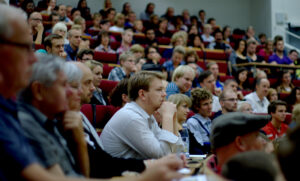Professional sporting teams reportedly lose millions every year because of injured and overtrained athletes.
To be competitive, athletes must push themselves physically. When athletes train, their muscles suffer microtrauma—lots and lots of microscopic tears. When given the chance to recover, this muscle knits itself back together and becomes stronger.
The problem comes when an athlete doesn’t give themselves long enough to recover and they prematurely return to training. The trauma in their muscle begins to compound, and instead of getting stronger, their athletic performance begins to decline. In an overtrained state such as this, an athlete is also much more likely to become injured.
This is not a new problem.
Sports scientists who manage athletes have long been aware that overtraining presents an issue. Up until now, however, they have not had a straightforward, accurate, cost-effective method of assessing it.
In the past, they might have used a physical assessment such as a repeated sprint tests. Unfortunately, this method of assessment is flawed. First, it doesn’t provide an accurate measurement of what’s actually wrong—whether or not an athlete’s muscles are still damaged from exercise. Second, if an athlete is already overtrained and you insist that they run some more, you’ll likely make the problem worse. Third, these physical assessments are simply quite time intensive.
Thankfully, a small team of innovators at the University of Western Australia has developed a solution that will help athletes know if they are overtrained—quickly, easily and cheaply.
IN THE PRICK OF TIME
Inflametric is a simple blood test that requires no more than a prick of an athlete’s finger 24 hours after exercise. A drop of blood is applied to a piece of cardboard and sent for analysis at a UWA lab. From this, scientists are able to determine whether the athlete’s muscles are still damaged from previous training sessions.
Dr Peter Arthur, lead molecular scientist on the Inflametric team, says this test to detect muscle inflammation has actually been around for 20 or 30 years. The Inflametric team has successfully transformed the test so that it requires only a fingerprick blood sample and is much cheaper and quicker to analyse in the lab.
But what is actually being analysed? It’s a protein called albumin. Albumin is one of the most prevalent proteins in our blood. Its sensitivity to inflammation allows researchers to track the damage and recovery of an athlete’s muscles.
If scientists can see a significant change in an athlete’s blood albumin after exercise, scientists can advise that the athlete scales back their training regime and allows their body time to fully recover.
The team is currently working to refine the test even more so that analysis of the blood sample will take 24 hours or less. This will allow athletes and sports scientists to consistently monitor an athlete’s recovery, helping them to train smarter and safer.







